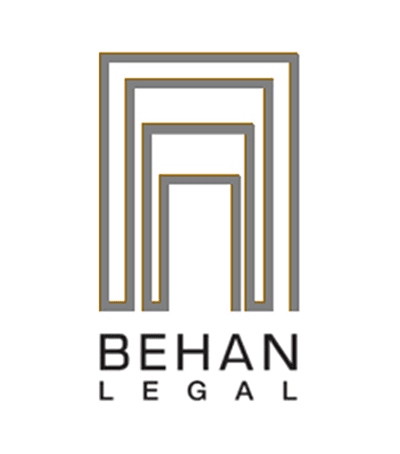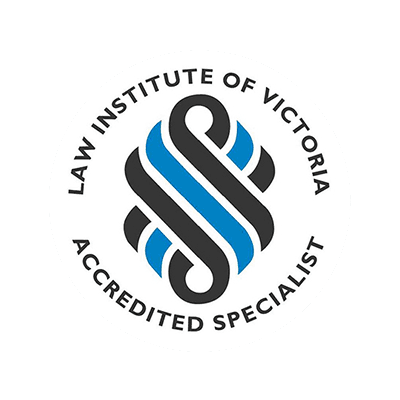Trade Marks Act 1995
This legislation applies to most applications, notices and requests lodged but not finalised at 1 January 1996.
REPEALED ACT APPLIES
The repealed Act applies where proceedings are underway at the time the new Act commenced for rectification of the Register, removal for non-use and infringement of a registered Trade Mark.
REGISTER OF TRADE MARKS
A one-part Register of Trade Marks replaces the old four-part Register. Trade Marks registered in Part A or Part B on 31 December 1995 was transferred to the new one part Register. Trade Marks registered in Part C or Part D on 31 December 1995 was transferred to the new Register as certification or defensive Trade Marks.
MULTI-CLASS APPLICATIONS
An application for registration of a Trade Mark can specify goods and/or services in one or more classes.
AMALGAMATION OF APPLICATIONS, WHICH HAVE NOT BEEN ACCEPTED FOR REGISTRATION OF A TRADE MARK
An applicant who lodged applications for the same Trade Mark for goods or services in different classes on the same day before 1 January 1996 can request the Registrar to amalgamate the applications into one multi-class application.
APPLICATIONS FOR REGISTRATION OF A SERIES OF TRADE MARKS
An application for registration of a series of Trade Marks cannot be a multi-class application.
KINDS OF TRADE MARKS
It is possible to apply to register sounds, smells, shapes including 3-dimensional shapes, and aspects of packaging as well as the more usual words or pictures or combination of these.
DIVISIONAL APPLICATIONS
There are new time limits for filing divisional applications.
STATEMENT OF USE
Applicants do not have to file a statement of use, or intention to use, their Trade Mark. An application to register the Trade Mark is taken as an indication of the applicant’s use or intended use of the Trade Mark on the goods and/or services specified.
"ALL GOODS" OR "ALL SERVICES"
The specification of goods and/or services included in an application for registration of a Trade Mark must not include the words “all goods,” “all services”, “all other goods”, or “all other services”.
DISCLAIMERS
The rights of registration are in respect of the Trade Mark as a whole. The Registrar will not require an applicant to disclaim rights to parts of a Trade Mark. Disclaimers will only be recorded on request of the applicant for registration or the registered owner of the Trade Mark.
GAINING ACCEPTANCE FOR REGISTRATION
When the Registrar examines an application, there is a presumption of registrability. Unless the Registrar is satisfied that there are grounds for rejecting the application, or that the application has not been made in accordance with the Act, the Registrar must accept the application.
TIME ALLOWED FOR ACCEPTANCE
Applicants are allowed 15 months from the date of the first report, in which to gain acceptance of their trademark. After this time, applications for extensions of this period for up to a total of 6 months will be granted on payment of fees. Applications for late or further extensions must be made on certain grounds and accompanied by a declaration setting out reasons supporting the extension of time. The appropriate fee must accompany any application for an extension of time.
CERTIFICATION OF TRADE MARKS
Although the Trade Marks Office remains responsible for determining whether the Trade Mark is registrable, the Trade Practices Commission (TPC), whose functions are soon to be performed by the Australian Competition and Consumer Commission, is responsible for approving the rules governing the use of certification Trade Marks.
An application to vary the rules of a registered certification Trade Mark must be made to the TPC. A registered owner must obtain the consent of the TPC to any proposed assignment of the registered certification Trade Mark before requesting the Registrar to record the assignment.
COLLECTIVE TRADEMARKS
An application for registration of a collective Trade Mark may be made only be an association that is an unincorporated body.
OPPOSITION
There are certain grounds set out in the Act on which registration of a Trade Mark can be opposed.
WELL-KNOWN TRADEMARKS
There is provision for the protection of well-known or famous Trade Marks.
TIME ALLOWED FOR REGISTRATION
The time allowed for registration after the application has been accepted is now 6 months not 12 months.
REGISTRATION AND RENEWAL PERIODS
The initial period of registration is ten years from filing the application. After that, the registration will continue as long as the renewal fees are paid every ten years.
BROADER INFRINGEMENT PROVISIONS
Currently infringement of a Trade Mark only occurs where a Trade Mark, which is identical or deceptively similar, is used on goods or services that are covered by the registration. Under the new Act, infringement will also occur where an identical or deceptively similar Trade Mark is used on goods or services similar to the registered goods or services, or on services that are closely related to the registered goods, or on goods that are closely related to the registered services.
REMOVAL OF TRADE MARK FROM REGISTER FOR NON-USE
A person must make enquiries into the use or non-use of a Trade Mark before filing an application to have that Trade Mark removed from the Register for non-use. The onus is on any person opposing a removal application, usually the registered owner, to show that the Trade Mark has in fact been used. If there is no opposition to the removal action, the Trade Mark is removed from the Register for the goods or services specified in the removal application.
REGISTERED USERS
The concept of registered use under the 1955 Act is replaced by authorised use.
AUTHORISED USE
Authorised use is use of a Trade Mark by a person under the control of the owner. The Trade Marks Office does not record authorised use and there is no need to advise the Trade Marks Office of the name of the authorised user. Use by an authorised user is taken to be use by the applicant for registration, or registered owner, of the Trade Mark. Subject to any agreement with the registered owner, authorised users have the right to take infringement action and to ask Customs to seize goods that infringe the Trade Mark.
ADDRESS FOR SERVICE
All correspondence from the Trade Marks Office is sent to the address for service in Australia nominated when applications, notices, or requests are filed. Registered owners of Trade Marks must also have an address for service in Australia.
ASSOCIATIONS
There is no provision for associating Trade Marks. Associated Trade Marks were entered in the old register but there is no equivalent entry in the new Register.
ASSIGNMENT
Assignment and transmission of a Trade Mark can be recorded any time after an application for registration of a Trade Mark is filed.
CLAIM TO INTEREST OR RIGHT IN RESPECT OF A TRADE MARK
A person who claims to have a right or interest in a Trade Mark, such as a mortgage, can have that claim recorded, however this record is not proof of the claim.
NOTICES TO THE AUSTRALIAN CUSTOMS SERVICE OBJECTING TO IMPORTATION OF GOODS
Notices of objection under section 103 of the repealed Act filed with Customs before 1 January 1996 remain in force until 1 April 1996 unless withdrawn earlier. Notices filed after 1 January 1996 will remain in force for 2 years.
EXTENSIONS OF TIME
Some applications for extensions of time of more than three months will be advertised in the Official Journal for opposition purposes.
(Prepared by AIPO)


